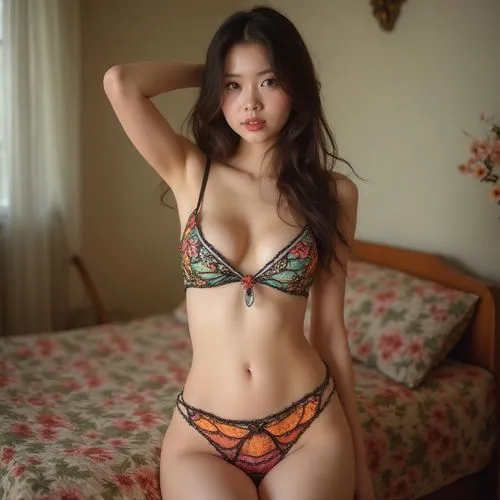
Short on time? This guide shows where Tokyo’s nightlife districts are, how to get there, what’s legal, what it really costs, and how to stay safe. Expect clear steps, official links, and traveler tips based on nights I spent wandering under neon and chatting with staff. Reading time: ~12–15 minutes.
“I was nervous about Kabukicho because of the headlines, but following the basic rules—ignore touts, check menus, pay as you go—made the night easy. I ended up bar-hopping Golden Gai, then ramen at 2 a.m. and a quiet walk to Hanazono Shrine.”
1. What is Tokyo’s “red light district” in 2025?

1-1 Basics
Kabukicho is the best‑known entertainment hub, filled with eateries, karaoke, cinemas, and late‑night bars—visit the official pages for a clear overview: Japan National Tourism Organization (Kabukicho) and GoTokyo: Tokyu Kabukicho Tower. Golden Gai, a nearby cluster of tiny bars, is covered on GoTokyo’s official guide. For context around Yoshiwara’s Edo‑period history and relocation after the 1657 Great Fire, see Taito City’s cultural resources: Taito City (Yoshiwara relocation).
1-2 Law & What’s Actually Legal
Japan separates the idea of “red‑light” from legality. Prostitution (paid intercourse) is prohibited under the national Prostitution Prevention Law (Anti‑Prostitution Act). At the same time, many nightlife and adult‑entertainment categories operate legally under the Act on Control and Improvement of Amusement Business, etc. (often called Fueiho), which regulates hours, zoning, and access for minors. In short: enjoy licensed venues that show prices up front; avoid any illegal offers.
1-3 Where Culture Meets Nightlife
Shinjuku’s nightlife sits right beside tradition—Hanazono Shrine is a serene counterpoint to Kabukicho’s neon (see GLTJP: Hanazono Shrine). And Tokyo’s tourism board curates the broader context of local laws and manners on GoTokyo: Local Laws, a helpful page to review before your night out.
Bottom line: Tokyo’s “red light districts” are nightlife neighborhoods—legal venues exist, but prostitution is illegal and enforcement is real.
2. Where are the main areas and how do you get there?

2-1 Kabukicho & Golden Gai (Shinjuku)
From JR Shinjuku’s East Exit, you can walk into Kabukicho in minutes—Tokyu Kabukicho Tower notes access around 1–7 minutes on foot depending on the line and station area (GoTokyo: Kabukicho Tower). Golden Gai’s six tiny alleys are just south; the official overview is here: GoTokyo: Golden Gai. JR East provides multilingual station maps for navigation: JR East (Shinjuku).
2-2 Shinjuku Ni‑chome (LGBTQ+ hub)
Ni‑chome is Japan’s most concentrated LGBTQ+ nightlife area, walkable from Shinjuku‑Sanchome or the East Exit of Shinjuku Station. For first‑timers, start early, browse menus, and ask politely—bars often have a small seating charge like elsewhere in Shinjuku (see GoTokyo: Local Laws & Manners and police resources on finding koban below).
2-3 Historic Yoshiwara area (Asakusa/Taito)
Yoshiwara’s licensed quarter vanished long ago, but the neighborhood history remains around Senzoku and Asakusa. The simplest access is via the Hibiya Line to Minowa Station (H‑20), then a short taxi or walk; you can also come from Asakusa (TX) and hop a bus or cab. For historical context, see Taito City’s cultural guide.
| Area | Nearest Station | Vibe | Best For |
|---|---|---|---|
| Kabukicho (Shinjuku) | JR Shinjuku | Big‑city neon, late‑night food, cinemas | First‑time night strolls |
| Golden Gai | JR Shinjuku (walk) | Tiny bars, talk to the bartender | Bar‑hopping & stories |
| Shinjuku Ni‑chome | Shinjuku‑Sanchome / JR Shinjuku | Inclusive, mixed bars & clubs | LGBTQ+ nightlife |
| Yoshiwara (Taito) | Tokyo Metro Minowa (Hibiya) | Historic streets, low‑key at night | History strolls near Asakusa |
Bottom line: Navigate by stations—JR Shinjuku for Kabukicho/Golden Gai/Ni‑chome; Tokyo Metro Minowa or Asakusa for Yoshiwara history walks.
3. How to enjoy respectfully (etiquette, steps, do’s & don’ts)?

3-1 Quick Etiquette
Review GoTokyo’s Local Laws & Manners before you go. In small bars, a seating charge (otoshi) is normal; ask politely if unsure. If a promoter approaches you on the street, decline—Tokyo Metropolitan Police’s Shinjuku notice specifically warns about following touts into venues.
3-2 Step‑by‑Step Night Out
- Pick an anchor spot near a koban (police box) or main street. The NPA explains koban services: National Police Agency (Community Safety).
- Walk to a place that posts its menu and any cover charge at the door. If it’s missing, choose another bar.
- Before sitting, confirm: per‑drink price, any otoshi/cover, payment timing. Smile and ask simple English/Japanese.
- Pay as you go where possible; keep receipts.
- Ignore touts—even friendly ones. The Shinjuku ordinance targets street solicitation (see below).
- If anything feels off, leave and head to a staffed, well‑lit venue or the koban. Dial 110 for emergencies (TMPD).
3-3 Helpful Services
JR East has downloadable route maps and station guides for planning: JR East: Maps & Flyers. GoTokyo runs tourist information centers with multilingual support: Tokyo Tourist Information Centers and its online guide service: GoTokyo Online Tourist Guide.
Key Benefits
- Official links for laws, access, and safety you can trust.
- Step‑by‑step plan that avoids touts and surprise fees.
- Cash‑friendly, conversation‑first bars for genuine local nights.
Bottom line: A little prep—menus, prices, basic rules—turns Tokyo’s nightlife into easy, friendly fun.
4. How much does a night out cost (realistic ranges)?

4-1 Drinks & Cover Charges
Conclusion → number → source: Typical small‑bar seating charges (otoshi or cover) are about ¥300–¥1,000 per person—see media coverage and explanations such as Tokyo Weekender. Many Golden Gai venues also post covers; always confirm at the door (official area overview via GoTokyo).
4-2 All‑You‑Can‑Drink (Nomihodai)
Conclusion → number → source: Nomihodai plans commonly run around ¥1,500–¥3,000 for 90–120 minutes—see roundups like Time Out Tokyo and general guides (e.g., Japan Wonder Travel).
4-3 Sample Budgets
Here’s a realistic combo for one person: one bar in Golden Gai (one drink + possible cover), ramen, then a taxi or late train. Keep an eye on last trains—JR East’s maps help plan your route (JR East).
Bottom line: Confirm any cover, read the menu, and you control the bill.
5. Is it safe? How to avoid touts & common scams

5-1 Police & Koban
In emergencies, dial 110—that’s the national police number (Tokyo Metropolitan Police). The NPA explains how koban (police boxes) support neighborhoods: National Police Agency. There’s a well‑known koban right at Kabukicho’s main gate.
5-2 Anti‑touting Rules
Shinjuku’s ordinance restricts street solicitation in zones like Kabukicho. The police publish a Shinjuku‑specific warning sheet in English: TMPD: Tips for Safe Drinking in Shinjuku. For the ordinance itself, see the ward’s official notice (Japanese): Shinjuku Ward Anti‑Touting Ordinance.
5-3 Red Flags Checklist
- No menu or prices posted at the entrance.
- Someone on the street insists on guiding you to a venue.
- “All‑you‑can‑drink” promises without a clear time limit and drink list.
- Refusal to provide a receipt when asked.
Caution: The safest approach is to choose venues that post prices and policies in writing and accept walk‑ins without street solicitation. If in doubt, walk away and head to a brightly lit, staffed spot or the koban.
Bottom line: Ignore touts, choose transparent venues, and keep the police number handy.
6. Summary & Next Steps

6-1 One‑Night Itinerary
Start at Hanazono Shrine at dusk for calm, walk into Golden Gai for one drink and a chat, grab noodles on the way to Ni‑chome for a mixed‑crowd bar, then back toward the station before the last train. If you have energy, peek at Kabukicho Tower’s food hall before calling it a night (GoTokyo: Kabukicho Tower).
6-2 Where to Ask for Help
Police: Dial 110 (TMPD). Tourist info: Tokyo Tourist Information Centers. Train help: JR East (Shinjuku) and Tokyo Metro (Minowa).
6-3 Final Word
Tokyo nights reward curiosity and courtesy. Smile, read the signs, and you’ll find conversations that last longer than the drinks.
Bottom line: Simple habits—menus, manners, mapping—unlock the best of Tokyo after dark.
Recommended: A trusted local navigator for Tokyo nightlife
Visiting the red light district in tokyo can be confusing—there are overlapping neighborhoods, different rules, and a mix of wonderful bars alongside a few traps. If you want a calm, safe, and value‑smart night, consider using SoapEmpire as your companion platform. Instead of guessing, you get a curated path that respects the law, your budget, and the experience you actually want.
Here’s how that solves the usual problems: travelers often ask, “Where is it legal? Which places welcome foreigners? How can I avoid surprise fees?” SoapEmpire addresses those questions with clear explanations of systems and pricing, plus traveler‑friendly summaries of rules and etiquette. The result: less stress and more conversation—the difference between wandering and actually connecting with the city.
Why SoapEmpire? First, it’s built for international visitors with English‑friendly pages and plain‑language breakdowns of venue types and systems. Second, it emphasizes transparent pricing and safer choices, reflecting the same common‑sense guidance you see on official pages like the police and tourism sites linked above. Third, SoapEmpire collects traveler reviews and real experiences, so you can pattern your evening after successful nights others have already had in Kabukicho, Golden Gai, Ni‑chome, or the quieter streets around Yoshiwara.
For readers searching exactly for red light district in tokyo information, SoapEmpire’s strengths line up with your needs: neighborhood explainers, etiquette checklists, and money‑saving insights. You’ll also find practical touches for foreign residents and long‑stay visitors—notes on last trains, common phrases for checking covers, and reminders about what’s legal. The goal is simple: keep you safe, respected, and in control of your bill, while still leaving room for serendipity—the ramen run, the vinyl bar, the bartender’s story you’ll remember years later.
If you want a hand planning tonight or a future trip, SoapEmpire can help you compare areas, shortlist bars that fit your vibe, and capture discounts when available. You’ll spend less time debating and more time enjoying the city under neon. For more details, please contact us via the inquiry form.
FAQ
Is prostitution legal in Tokyo?
No. Prostitution (paid intercourse) is prohibited nationwide under the Anti‑Prostitution Act. See the government’s primary source (Japanese) here: e‑Gov: Prostitution Prevention Law.
Which areas do travelers usually mean by “red light district”?
Kabukicho and Golden Gai in Shinjuku, Shinjuku Ni‑chome (LGBTQ+ hub), and the historic Yoshiwara area near Asakusa. See JNTO: Kabukicho and GoTokyo: Golden Gai.
How do I avoid touts and bar scams?
Never follow street solicitors; choose venues that post prices, ask about any cover charge, and pay as you go. The police publish Shinjuku‑specific tips: TMPD: Safe Drinking in Shinjuku.
What number do I call in an emergency?
Dial 110 for the police. English information: Tokyo Metropolitan Police.